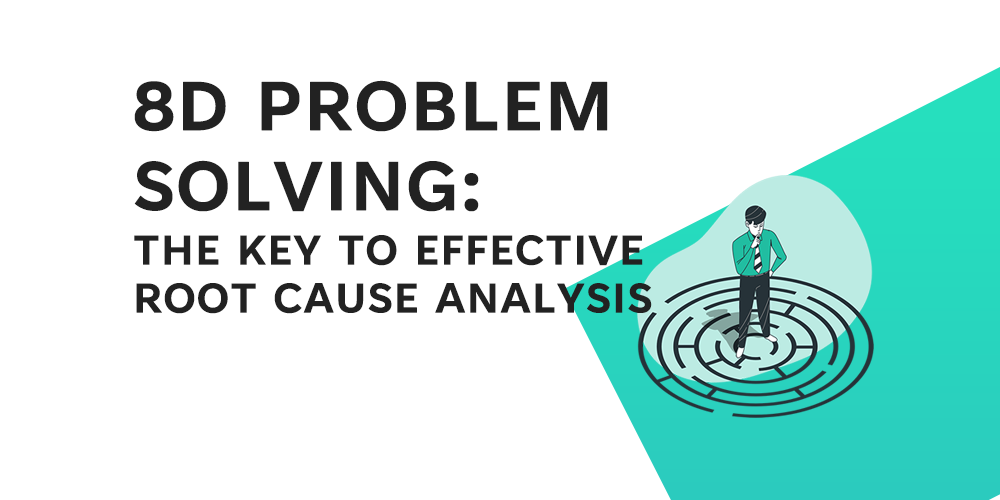In the world of manufacturing and quality control, ensuring a process consistently produces products that meet specifications is paramount. Central to this quest is the understanding and application of process capability indices. Among these, the indices Cp, Cpk, Pp, and Ppk stand out as the cardinal metrics that professionals rely upon. These indices not only quantify how well a process can produce within given specifications but also highlight potential areas for improvement. By decoding the significance and interplay of Cp, Cpk, Pp, and Ppk, businesses can elevate their quality standards, reduce waste, and enhance customer satisfaction. This post aims to demystify these vital indices, offering a comprehensive insight into their relevance and application in today’s manufacturing landscape.
Table of Contents
Basics of Process Capability Indices
Process capability indices are numerical metrics used in quality control to assess the capability of a process in relation to its specification limits. These indices provide insights into how well a process is functioning and if it is capable of consistently producing output within specified limits. The most common indices include Cp, Cpk, Pp, and Ppk, each serving a specific purpose.
The below may get a little confusing, so we would suggest also using our Process Capability Calculator and Process Capablity Analyzer Tool to help your learning.
Cp (Process Capability Index):
- Definition: Cp measures the capability of a process when it’s running under ideal conditions. It evaluates the width of the process variation in comparison to the width of the specification limits.
- Purpose: To determine if a process can potentially produce within the given specifications.
- Formula:
[latex]Cp = \frac{USL – LSL}{6 \sigma}[/latex]
Where USL is the Upper Specification Limit, LSL is the Lower Specification Limit, and σ is the process standard deviation.
Cpk (Process Capability Ratio):
- Definition: Cpk measures the capability of a process, considering both the process variation and its centrality. It evaluates the proximity of the process mean to the specification limits.
- Purpose: To determine the ability of a process to produce within specifications while accounting for process centering.
- Formula:
[latex]Cpk = \min \left( \frac{USL – \mu}{3 \sigma}, \frac{\mu – LSL}{3 \sigma} \right)[/latex]
Where μ is the process mean.
Pp (Overall Process Capability):
- Definition: Pp measures the capability of a process under actual operating conditions over a long period.
- Purpose: To give a more realistic assessment of the process capability by considering long-term variations.
- Formula:
[latex]Pp = \frac{USL – LSL}{6 \sigma_{overall}}[/latex]
Where σoverall is the overall process standard deviation considering long-term data.
Ppk (Performance Capability Index):
- Definition: Ppk measures the performance capability of a process, considering both the long-term process variation and its centrality.
- Purpose: To provide insights into how consistently a process can produce within specifications over the long run while accounting for process centering.
- Formula:
[latex]Ppk = \min \left( \frac{USL – \mu}{3 \sigma_{overall}}, \frac{\mu – LSL}{3 \sigma_{overall}} \right)[/latex]
In essence, while Cp and Pp give insights into the potential capability of a process, Cpk and Ppk provide a more grounded view by considering the process mean. Understanding these metrics is crucial for any organization aiming for superior quality control and continuous improvement.
Understanding Cp and Cpk
In the world of quality control and manufacturing, understanding the capability of a process is crucial. This is where the indices Cp and Cpk come into play. Both metrics offer insights into the performance of a process in relation to its specification limits, but they serve different purposes and provide slightly different information.
Cp (Process Capability Index)
- Definition and Formula: The Cp index, often referred to as the Process Capability Index, measures the potential capability of a process when it’s running under ideal conditions. It evaluates how much the process can produce within specification limits without considering the actual position of the process mean (centering).
[latex]Cp = \frac{USL – LSL}{6 \sigma}[/latex]
Where: USLUSL is the Upper Specification Limit, LSLLSL is the Lower Specification Limit, and �σ is the process standard deviation.
- Interpretation and Significance: If Cp is greater than 1, it indicates that the process has the potential to produce within specification limits. The higher the Cp, the better the potential performance. However, a high Cp alone does not guarantee that products will meet specifications, as it does not account for process centering. This is where Cpk comes into play.
Cpk (Process Capability Ratio)
- Definition and Formula: The Cpk index, sometimes called the Process Capability Ratio, considers both the process variation and its centrality (centering). It evaluates the proximity of the process mean to the specification limits, giving a more realistic view of the process’s capability.
[latex]Cpk = \min \left( \frac{USL – \mu}{3 \sigma}, \frac{\mu – LSL}{3 \sigma} \right)[/latex]
Where: μ is the process mean.
- How it Accounts for Process Centering: Cpk provides a more grounded view by considering how close the process mean is to the specification limits. A process might have a high Cp value indicating its potential, but if it’s not centered between the specification limits, it might still produce many out-of-specification products. Cpk addresses this by evaluating both the spread (variation) and the centering of the process.
- Importance of Cpk in Real-World Applications: Cpk is widely regarded as a more practical metric in real-world applications because it offers a comprehensive view of the process’s capability. In industries where precision and adherence to specifications are critical, such as aerospace, automotive, and pharmaceuticals, Cpk values are often closely monitored. A high Cpk value (greater than 1, ideally closer to 1.5 or higher) indicates that a process is both capable and well-centered within the specification limits, leading to fewer defects and higher customer satisfaction.
By understanding and leveraging both Cp and Cpk, manufacturers and quality professionals can ensure they’re not just looking at potential capability, but also the actual performance of a process in real-world conditions.
Delving into Pp and Ppk
In the pursuit of understanding and optimizing manufacturing and quality control processes, professionals often extend their analysis beyond just Cp and Cpk. This leads us to Pp and Ppk, two additional indices that provide insights into the long-term performance of a process.
Pp (Overall Process Capability)
- Definition and Formula: The Pp index, denoted as the Overall Process Capability, measures the capability of a process under actual operating conditions over a longer period, encompassing both short-term and long-term variations.
[latex]Pp = \frac{USL – LSL}{6 \sigma_{overall}}[/latex]
Where: σoverall represents the overall process standard deviation, considering data from a longer period.
- Differences and Similarities with Cp:
- Similarities: Both Pp and Cp evaluate the width of the process variation compared to the width of the specification limits. They are structured similarly in their formulaic representation.
- Differences: While Cp assesses the process capability under “ideal” or short-term conditions, Pp provides a view of the capability over a longer timeframe, capturing more variability sources. As such, Pp often gives a more comprehensive view of the process’s true capability.
Ppk (Performance Capability Index)
- Definition and Formula: The Ppk index, known as the Performance Capability Index, gives insights into the long-term performance capability of a process, factoring in both the long-term process variation and its centrality.
[latex]Ppk = \min \left( \frac{USL – \mu}{3 \sigma_{overall}}, \frac{\mu – LSL}{3 \sigma_{overall}} \right)[/latex]
Where: μ is the process mean, and σoverall is the overall process standard deviation.
- How it Compares to Cpk and its Real-World Relevance:
- Comparison to Cpk: While Cpk provides insights into the short-term capability of the process, considering its variation and centrality, Ppk does the same for the long-term. Thus, if Ppk is substantially lower than Cpk, it indicates that there might be significant long-term variations or shifts in the process that need addressing.
- Real-World Relevance: Ppk is crucial in scenarios where long-term consistency and reliability are essential. In industries where products have a long lifecycle or where safety and reliability are paramount (like automotive, aerospace, or medical devices), monitoring Ppk ensures that the process remains stable and consistent over time.
In conclusion, while Cp and Cpk provide valuable insights into the short-term capability and performance of a process, Pp and Ppk offer a more extended view, ensuring that processes are robust and reliable in the long run. By understanding and monitoring all these indices, organizations can achieve and maintain high-quality standards across their products.
Practical Applications and Examples
Process capability indices are not just theoretical constructs; they play a pivotal role in real-world manufacturing and quality assurance. Their application can mean the difference between a successful product launch and a costly recall.
Real-world Scenarios Where Each Index is Applied:
- Cp and Cpk:
- Automotive Manufacturing: When producing car components, it’s essential that each part meets specific dimensions and tolerances. For instance, brake discs that are too thick or thin could lead to safety issues. Here, Cp might be used to assess if a machine can produce brake discs within specifications, while Cpk would indicate if the produced discs are consistently centered within the desired specification limits.
- Pharmaceuticals: In drug production, the dosage and purity of a medication must be consistent. Cp and Cpk can help assess and ensure that the production process consistently yields pills or liquids with the correct dosage and minimal impurities.
- Pp and Ppk:
- Electronics Manufacturing: Over time, the machinery used to produce microchips or circuit boards might drift due to wear and tear. Pp and Ppk can help monitor this drift over extended periods, ensuring the long-term reliability of the production process.
- Food Production: In a cereal manufacturing plant, for instance, Pp might be used to monitor the long-term consistency of box weights, ensuring that each box contains the right amount of product over months or years.
Benefits of Using These Indices in Quality Control:
- Predictability: These indices offer a quantifiable measure of a process’s capability, allowing businesses to predict their defect rates and product quality with more accuracy.
- Cost Savings: By identifying processes that are not capable or centered, businesses can make necessary adjustments, reducing waste, rework, and recalls.
- Customer Satisfaction: Delivering products that consistently meet specifications ensures higher customer satisfaction and trust.
- Risk Mitigation: In industries where safety is paramount, like aerospace or medical devices, ensuring process capability can mitigate risks associated with product failures.
Potential Pitfalls or Misconceptions and How to Avoid Them:
- Misunderstanding of Indices: One common misconception is thinking a high Cp guarantees a good process. Without considering Cpk (centering), a process might still produce out-of-spec products.
- Solution: Always consider both capability (Cp, Pp) and performance (Cpk, Ppk) indices together for a comprehensive view.
- Over-reliance on Short-term Data: Relying solely on Cp and Cpk might give an overly optimistic view if there are long-term drifts or shifts in the process.
- Solution: Regularly monitor Pp and Ppk to understand the long-term capability and make necessary adjustments.
- Ignoring External Factors: External factors, like environmental changes or raw material variability, can affect process capability.
- Solution: Regularly review and update specifications and control limits to account for any external changes.
In essence, understanding and applying process capability indices is paramount in today’s competitive and quality-driven landscape. By leveraging these tools, businesses can achieve consistent product quality, minimize risks, and ensure customer satisfaction.
How to Improve Process Capability Metrics
Improving process capability metrics is essential for businesses aiming to achieve consistent quality, minimize defects, and optimize production costs. Here’s how organizations can enhance their Cp, Cpk, Pp, and Ppk values:
Steps and Strategies to Optimize Values:
- Identify Root Causes: Before implementing any changes, it’s crucial to understand the root causes of process variations. Techniques like the fishbone diagram or the 5 Whys can help identify underlying issues.
- Implement Statistical Process Control (SPC): Use control charts to monitor process behavior. Any deviations from the control limits can indicate potential problems that need addressing.
- Optimize Machine Maintenance: Regular maintenance, calibration, and cleaning of equipment can prevent machinery drift and reduce variability.
- Training and Skill Development: Ensure that operators and staff are adequately trained. A well-trained workforce can consistently execute processes, reducing variability.
- Standardize Processes: Document and standardize processes to ensure consistency. This includes setting clear guidelines, procedures, and best practices.
- Review and Update Specifications: Sometimes, the specifications might be too tight or not aligned with customer needs. Reviewing and adjusting these can lead to better capability metrics.
- Supplier Quality Control: Ensure that raw materials or components received from suppliers meet quality standards. Variability in inputs can significantly impact process capability.
- Implement Quality Improvement Methodologies: Techniques such as Six Sigma, Lean Manufacturing, or Total Quality Management (TQM) focus on continuous improvement and can help optimize process capability metrics.
The Importance of Continuous Monitoring and Adjustment:
Continuous monitoring is vital for sustaining improvements. Processes can drift over time due to wear and tear, external factors, or other changes in the production environment. By regularly monitoring process capability metrics and making necessary adjustments, businesses can ensure that they consistently produce quality products.
The Interplay Between the Indices
Understanding how Cp, Cpk, Pp, and Ppk work in tandem can provide a holistic view of process capability, ensuring that businesses have a comprehensive understanding of their production quality.
How They Work Together:
- Short-Term vs. Long-Term: While Cp and Cpk offer insights into the short-term capability and performance of a process, Pp and Ppk provide a long-term view. Together, they offer a full picture of the process’s capability over different timeframes.
- Potential vs. Actual Performance: Cp and Pp gauge the potential capability of a process, showing what’s possible under ideal or overall conditions. In contrast, Cpk and Ppk provide insights into the actual performance, considering both variability and centrality.
Situations Where One Index Might Be More Relevant Than the Others:
- New Processes: For newly established processes, Cp and Cpk might be more relevant initially, as there might not be enough data for a long-term view (Pp and Ppk).
- Processes with Known Drifts: For processes that are known to have drifts or shifts over time, Pp and Ppk become crucial to monitor and control the long-term consistency.
- Critical Safety Applications: In industries where safety is paramount (like aerospace or medical devices), Cpk and Ppk are often more closely monitored, as they provide a more realistic view of the process’s performance relative to its specifications.
Beyond the Four: Other Important Metrics in Process Capability
While Cp, Cpk, Pp, and Ppk are foundational in assessing process capability, there are other metrics that further refine our understanding and give a deeper insight into process behavior and quality.
Other Relevant Metrics:
- Cm (Machine Capability Index):
- Definition: This metric evaluates the inherent capability of machinery, excluding other external factors.
- How it Complements: Cm is useful in determining if machine variability is the root cause of process issues. If Cm is high but Cp is low, it indicates that factors other than machinery are contributing to process variation.
- Z Benchmarks (Zmin, ZUSL, ZLSL):
- Definition: These are standardized scores that measure how many standard deviations a process mean is from the specification limits.
- How they Complement: Z benchmarks can provide a direct measure of process performance in terms of standard deviations, which can be useful in Six Sigma methodologies where processes aim to be within certain Z values.
- Process Performance Indices (Ppu and Ppl):
- Definition: These are similar to Pp and Ppk but evaluate the performance relative to individual specification limits (upper and lower) rather than the overall width.
- How they Complement: These indices can help pinpoint if process variations are more towards the upper or lower specification limits, providing more detailed insights for optimization.
How They Complement the Main Four Indices:
While Cp, Cpk, Pp, and Ppk provide a broad overview of process capability, the additional metrics offer more nuanced insights. They help pinpoint specific areas of concern, be it machinery performance, proximity to individual specification limits, or standardized performance evaluation. Together, these metrics offer a comprehensive toolkit for organizations to delve deep into their processes and optimize them for consistent quality.
Conclusion
Process capability indices, spearheaded by Cp, Cpk, Pp, and Ppk, are indispensable tools in the realm of quality control and manufacturing. They offer a quantifiable measure of how well processes can produce products that meet specifications, thereby ensuring consistent quality and customer satisfaction.
In today’s competitive marketplace, where even minor quality issues can lead to significant reputational and financial implications, understanding and mastering these indices becomes paramount. It’s not just about meeting specifications; it’s about exceeding them, optimizing costs, and continuously striving for excellence.
For businesses aiming for the pinnacle of quality and customer satisfaction, investing time and resources into understanding, monitoring, and optimizing these indices is not just a recommendation—it’s a necessity. By doing so, they not only ensure product quality but also pave the way for innovation, growth, and long-term success.








